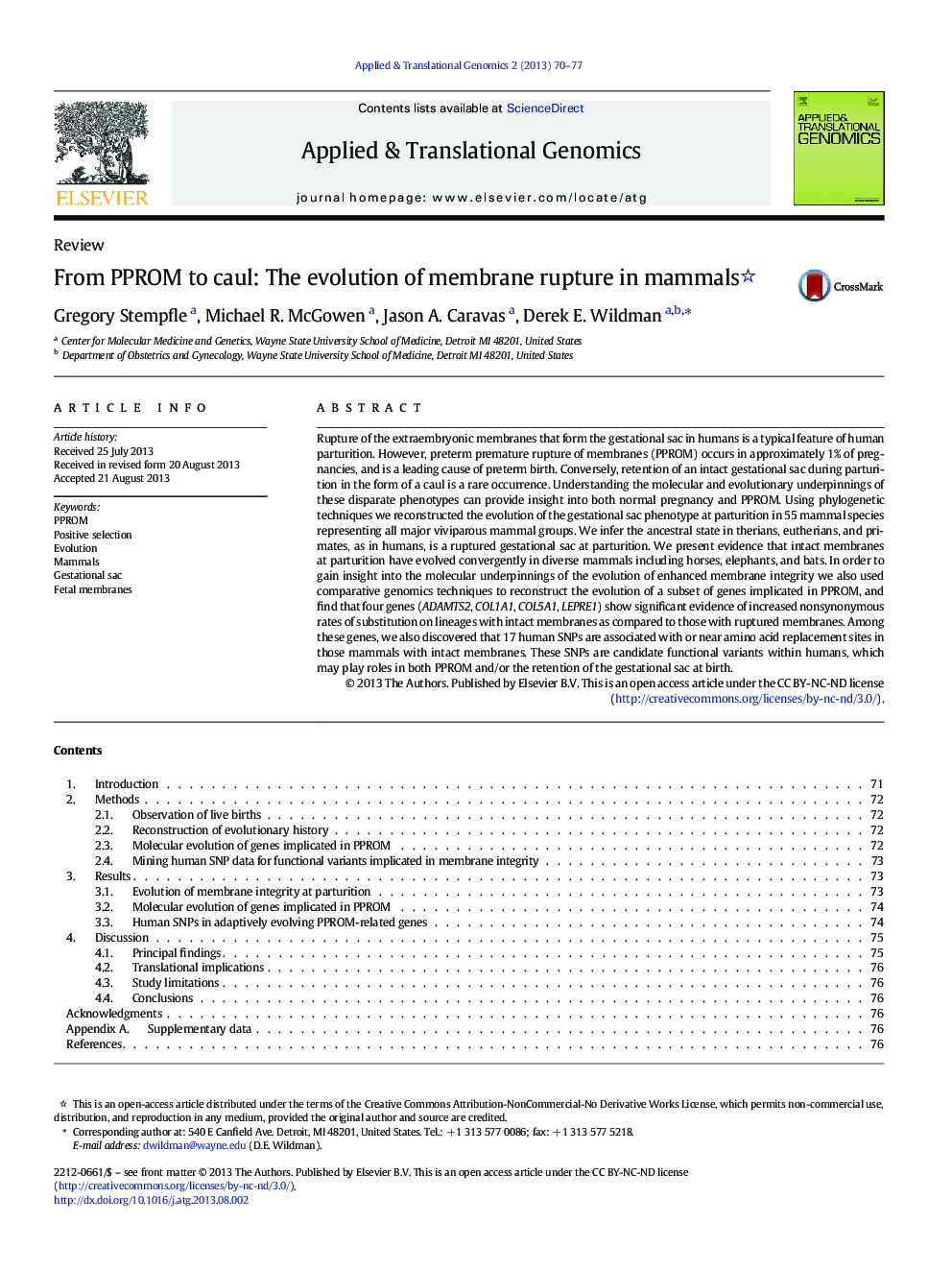| Article ID | Journal | Published Year | Pages | File Type |
|---|---|---|---|---|
| 2773031 | Applied & Translational Genomics | 2013 | 8 Pages |
•We reconstructed the evolution of the gestational sac at parturition in mammals.•We offer evidence that intact membranes during parturition evolved multiple times.•Four genes show increased nonsynonymous rates on lineages with intact membranes.•Human SNPs are near amino acid replacements sites in mammals with intact membranes.•SNPs near amino acid changes in certain species may play a role in sac integrity.
Rupture of the extraembryonic membranes that form the gestational sac in humans is a typical feature of human parturition. However, preterm premature rupture of membranes (PPROM) occurs in approximately 1% of pregnancies, and is a leading cause of preterm birth. Conversely, retention of an intact gestational sac during parturition in the form of a caul is a rare occurrence. Understanding the molecular and evolutionary underpinnings of these disparate phenotypes can provide insight into both normal pregnancy and PPROM. Using phylogenetic techniques we reconstructed the evolution of the gestational sac phenotype at parturition in 55 mammal species representing all major viviparous mammal groups. We infer the ancestral state in therians, eutherians, and primates, as in humans, is a ruptured gestational sac at parturition. We present evidence that intact membranes at parturition have evolved convergently in diverse mammals including horses, elephants, and bats. In order to gain insight into the molecular underpinnings of the evolution of enhanced membrane integrity we also used comparative genomics techniques to reconstruct the evolution of a subset of genes implicated in PPROM, and find that four genes (ADAMTS2, COL1A1, COL5A1, LEPRE1) show significant evidence of increased nonsynonymous rates of substitution on lineages with intact membranes as compared to those with ruptured membranes. Among these genes, we also discovered that 17 human SNPs are associated with or near amino acid replacement sites in those mammals with intact membranes. These SNPs are candidate functional variants within humans, which may play roles in both PPROM and/or the retention of the gestational sac at birth.
